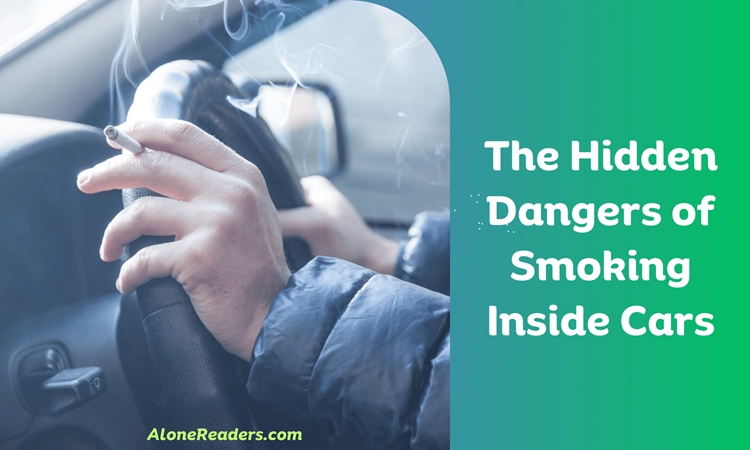
Smoking has been a contentious topic for decades, particularly concerning its impact on health and the environment. While the dangers of smoking in enclosed spaces like homes and offices are well-documented, the specific risks associated with smoking inside cars are less frequently discussed but are equally significant. This article delves into the various harmful effects of smoking inside vehicles, touching upon health concerns, safety issues, and the impact on the car's interior.
First and foremost, the health risks associated with smoking inside a car are amplified due to the confined space. When a cigarette is lit inside a vehicle, the smoke is trapped in a small area, significantly increasing the concentration of harmful chemicals inhaled by both the smoker and passengers. This is particularly concerning when children are present. Children's bodies are still developing, and their exposure to secondhand smoke in such confined spaces can lead to severe respiratory problems, ear infections, and even a higher risk of sudden infant death syndrome (SIDS).
The issue of secondhand smoke is not limited to just passengers. The residual effects of smoking linger long after the cigarette has been extinguished. Toxic particles from cigarette smoke settle on the car's interior surfaces and circulate through the air conditioning and heating systems, creating an environment that continuously exposes occupants to harmful substances. This phenomenon, known as thirdhand smoke, poses a long-term health risk as these toxic residues can be difficult to completely remove.
In addition to health concerns, smoking inside a car has significant implications for vehicle safety. The act of lighting a cigarette can be a distraction, diverting the driver’s attention from the road. Furthermore, disposing of ash or a cigarette butt while driving can lead to dangerous situations, potentially causing accidents. There have been instances where a lit cigarette accidentally dropped inside the car has led to a loss of control or even fire.
The impact of smoking on a car's interior is another crucial aspect to consider. Smoke can permeate fabrics and other materials inside the vehicle, leaving a persistent odor that is challenging to eliminate. This not only creates an unpleasant environment for occupants but also affects the resale value of the car. Non-smokers are typically reluctant to purchase a vehicle that smells of smoke, and even if they do, it's often at a significantly reduced price. The smoke also causes discoloration and deterioration of the car's upholstery, dashboard, and other interior components, leading to a decline in the overall aesthetic and condition of the vehicle.
Furthermore, the accumulation of ash and tar from cigarettes can damage electronic components within the car, such as the stereo system, air conditioning vents, and dashboard instruments. This damage not only impacts the functionality of these components but can also lead to costly repairs and replacements.
Environmental considerations also play a role in the risks associated with smoking in cars. The confined space of a vehicle means that pollutants from cigarette smoke have no immediate escape, leading to higher concentrations of harmful substances like carbon monoxide, nitrogen oxides, and volatile organic compounds. These pollutants contribute to poor air quality inside the car, which can have broader environmental implications when they eventually escape into the atmosphere.
Legal implications are another factor to consider. Many regions have enacted laws prohibiting smoking in cars, particularly when minors are present. These laws aim to protect passengers from secondhand smoke exposure and underscore the seriousness of the health risks involved. Violating these laws can lead to fines and other penalties, reflecting the increasing recognition of the dangers of smoking inside vehicles.
In conclusion, the adverse effects of smoking inside cars extend far beyond the well-known health risks associated with smoking in general. The confined space of a vehicle intensifies exposure to harmful substances, poses significant safety risks, degrades the interior of the car, and can have legal consequences. Understanding these risks is crucial for smokers and non-smokers alike, emphasizing the importance of maintaining a smoke-free environment inside vehicles for the health and safety of all occupants.